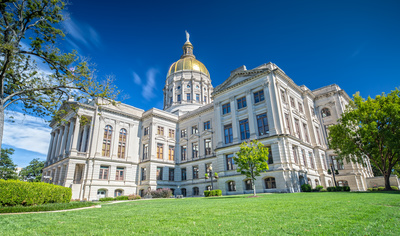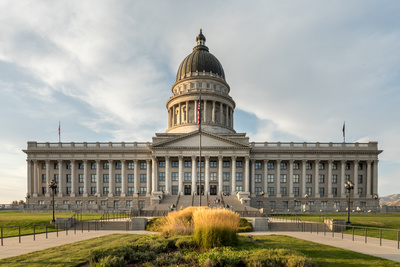
Elections & Campaigns, Energy & Environment
Nine States Face Key Public Utility Commission Elections Ahead of 2026
October 27, 2025 | Billy Culleton
January 17, 2022 | Lauren Doroghazi, Chris Mattox, Billy Culleton

Key Takeaways:
As states kick off their 2022 legislative sessions, here are some of the main topics we expect lawmakers to explore in the area of energy and the environment. This post is part of our series on state policy issues to watch in 2022 (click here to see all issues areas).
Background: According to the Environmental Protection Agency, less than a quarter of the waste generated in the United States is collected for recycling. For decades, U.S. interests have generally relied on exporting recyclable materials to foreign markets for sorting and processing, and those markets have largely stopped importing materials over the last several years. The lack of infrastructure for processing recyclable materials has resulted in growing amounts of waste and an increasing cost burden on municipalities. Additionally, processing enough recycled materials to match demand and reduce the use of virgin materials in packaging can not be met by current infrastructure investments in the United States. Extended producer responsibility programs for packaging represent one solution to this problem because they provide funding for recycling programs, which is attractive to municipalities, and if the fees ecomodulate (meaning that fees are higher for packaging that is most difficult to recycle, and lower for packaging that is easiest), ultimately less waste will end up in landfills.
Why It's Trending: Like many issues, packaging EPR is trending in the states because the federal government has failed to act. An ideal solution would cross state lines to ensure that the greatest amount of packaging waste possible is recycled. Additionally, companies and trade associations spanning a variety of industries have recently supported a variety of solutions related to the recycling of packaging waste.
Current Landscape: In 2021, Maine and Oregon became the first two states to enact laws creating extended producer responsibility requirements for packaging. Many states have enacted extended producer responsibility programs for electronics and other hard-to-recycle products, but these laws represent the first programs that affect nearly all consumer goods. Both states will now begin the regulatory implementation process that will put in place the specifics of both programs.

2022 Outlook: In addition to the rulemaking activity in both Maine and Oregon, expect California to debate packaging EPR as well. Voters will be deciding on a ballot measure in 2022, the California Plastic Waste Reduction Regulations Initiative, that would require CalRecycle to promulgate regulations that reduce the use of single-use plastic packaging and foodware, and would levy a fee on single-use packaging. The impending ballot measure will likely prompt legislative activity, and a revamped version of CA SB 54 is likely to be debated.
Background: Global sales of battery powered and plug-in hybrid electric vehicles (EVs) have steadily increased over the past decade even if their percentage of the American fleet remains small. As battery prices continue to decline, major automotive manufacturers have promised more electric models in the near future with a long-term promise to transition to all-electric fleets. Focus on decarbonizing global energy sources to slow climate change will add pressure to electrify vehicles globally.
Why It's Trending: Despite the enthusiasm for EVs, consumers still have major concerns over driving range and a lack of public charging infrastructure. In November 2021, President Biden signed the Infrastructure Investment and Jobs Act providing, among other provisions, $7.5 billion for states and localities to build out the nation’s EV charging station network. The newly created Joint Office of Energy and Transportation will be responsible for administering the federal investment in EV charging infrastructure as well as offering states and localities technical assistance on implementation.
Current Landscape: So far, state lawmakers have primarily focused on enacting incentives to purchase EVs. Forty-five states and the District of Columbia currently offer some type of financial incentives to buy EVs either through tax credits, rebates on vehicle fees, or exemptions from driving in high-occupancy vehicle (HOV) lanes.
2022 Outlook: As federal infrastructure funds are doled out to state DOTs, expect more in depth conversations among state legislators on what charging stations will look like outside of interstate corridors and how the extra energy load will impact commercial and low-income ratepayers.
This post is part of our series on state policy issues to watch in 2022 (click here to see all issues areas).

October 27, 2025 | Billy Culleton

August 13, 2025 | Bill Kramer

July 8, 2025 | David Shonerd